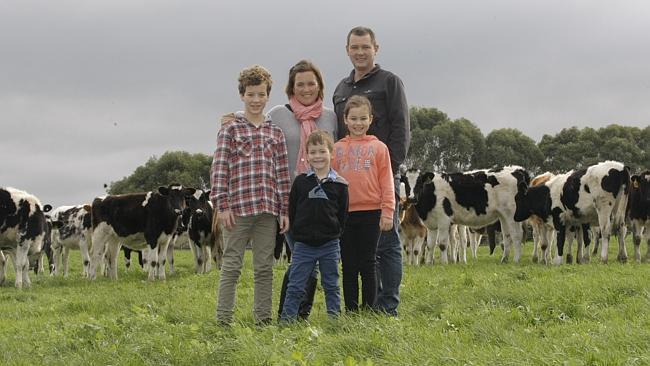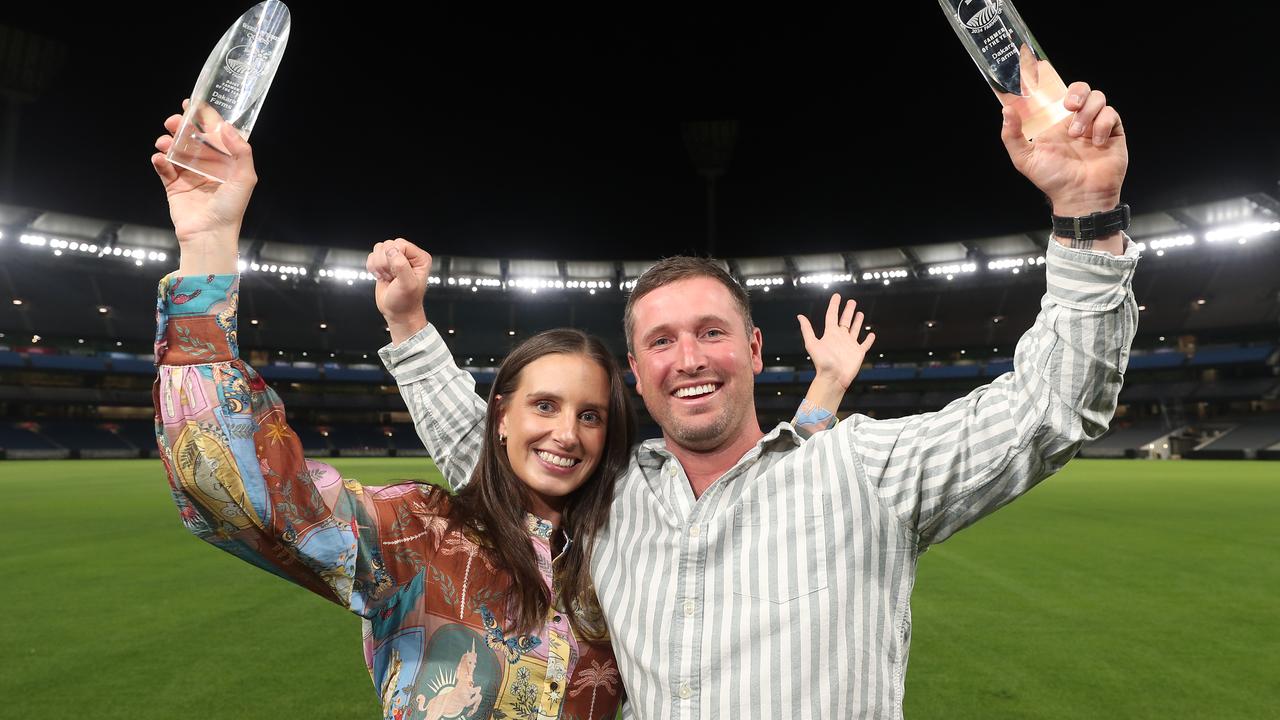Heifer rearing is the whey forward for Simon and Katie Gleeson of Bilyana Grazing
ANY dairy farmer will tell you a well-reared heifer is crucial to their business.

ANY dairy farmer will tell you a well-reared heifer is crucial to the future of their business.
And one couple from southwest Victoria has taken the role and responsibility of heifer rearing out of the hands of farmers.
Simon and Katie Gleeson take in heifers after weaning, grow them out, join them and return them to farmers ready for the dairy at 600kg.
Their business has grown from 84 heifers nine years ago to 2000-3000 this year.
But convincing dairy farmers they need another “service provider” wasn’t always easy.
“Ten years ago heifers were a necessary evil and then we found five years ago, even before the (live export demand) came along, people started to place more value on them,” Simon said.
“It’s been really hard to justify what we do, but when farmers sit at home with pen and paper and work out what it costs them to do the same job, they know it is beneficial for them.
“It is no different to a dairy farmer getting someone in to do his silage or fertiliser spreading, we are another contractor.”
Simon said farmers who sent them heifers for the first time were “always a little apprehensive” but were converts “once they see the benefits” of the heifer’s good lactation and its ability to easily get back in calf.
Simon originally hailed from Maffra and the couple worked in northern Victoria before moving to southwest Victoria 13 years ago.
An opportunity arose at Bilyana Grazing at Brucknell, near Timboon, after its property owners drew up a business plan for heifer rearing.
The Gleesons advanced from management to business partners after four years and within seven years went in partnership to buy a farm at nearby Cooriemungle.
Bilyana Grazing still has original clients in its group of 20 mostly local commercial dairy farmers.
Holsteins are the dominant breed, but in recent years the bigger-framed animals have been replaced by medium Holsteins with noticeable injections of Jersey or crossbreeding.
“We are paid $2.65/kg to grow the heifers and that’s all inclusive — the feed, supplementary feed, pastures and animal health, all the mating, Jersey bulls, pregnancy testing,” Simon said.
Their biggest client sends 250 heifers a year and the smallest 30, Katie said.
Heifers are grouped according to size and weight, and fed a diet of pellets and pasture until 200-260kg before moving onto a pasture or forage-based diet.
Heifers reach 360-400kg at joining.
Every eight weeks heifers are weighed and receive animal health treatments.
“They go through my computer and a weight report is produced and then go to Katie’s desk and she produces an account that goes with a report to the farmer,” Simon said.
Perennial ryegrass is the pasture base at both the 356ha Brucknell farm as well as the 283ha at Cooriemungle.
Heifers are also contracted out to three other farms.
The region has an average rainfall of 914mm producing 8.5 tonnes of dry matter of homegrown feed per hectare annually.
Between 2000 and 3000 rolls of silage is cut each year and if the operation requires bought-in hay vetch is preferred.
Annual summer crops of brassicas or sorghum assist with pasture renovation, while annual ryegrass or Italian varieties have been grazed as a crop during winter.
Two applications of fertiliser are applied a year with urea added each month.
Undercover stock yards with scales in the crush, set up as a “one-man operation”, allow 100 heifers an hour to be drenched and weighed.
Bilyana Grazing sources all the bulls for joining to manage the risk of disease, but 50 per cent of the heifers are artificially inseminated.
This is also the responsibility of Simon and Katie who work with each individual farmer’s herd improvement company.
Protocols for biosecurity are in place, as are management plans for outbreaks of diseases such as Johne’s or pestivirus.
Like many industry service providers, the Gleeson’s business fluctuates with variations in the farmgate milk price.
Previous price drops have affected heifer numbers coming through as farmers opted to sell a portion to the export market to assist with cashflow.
Last month, the couple received a lot of inquiry and Simon said he wasn’t sure if it was to do with the higher milk prices, and possible herd expansion plans, or concerns about the weather.
Other business challenges include season risk, the volatile cost of production and labour.
“If we had more land and more staff, I’m pretty sure we could fill (extra demand) tomorrow,” Simon said.


